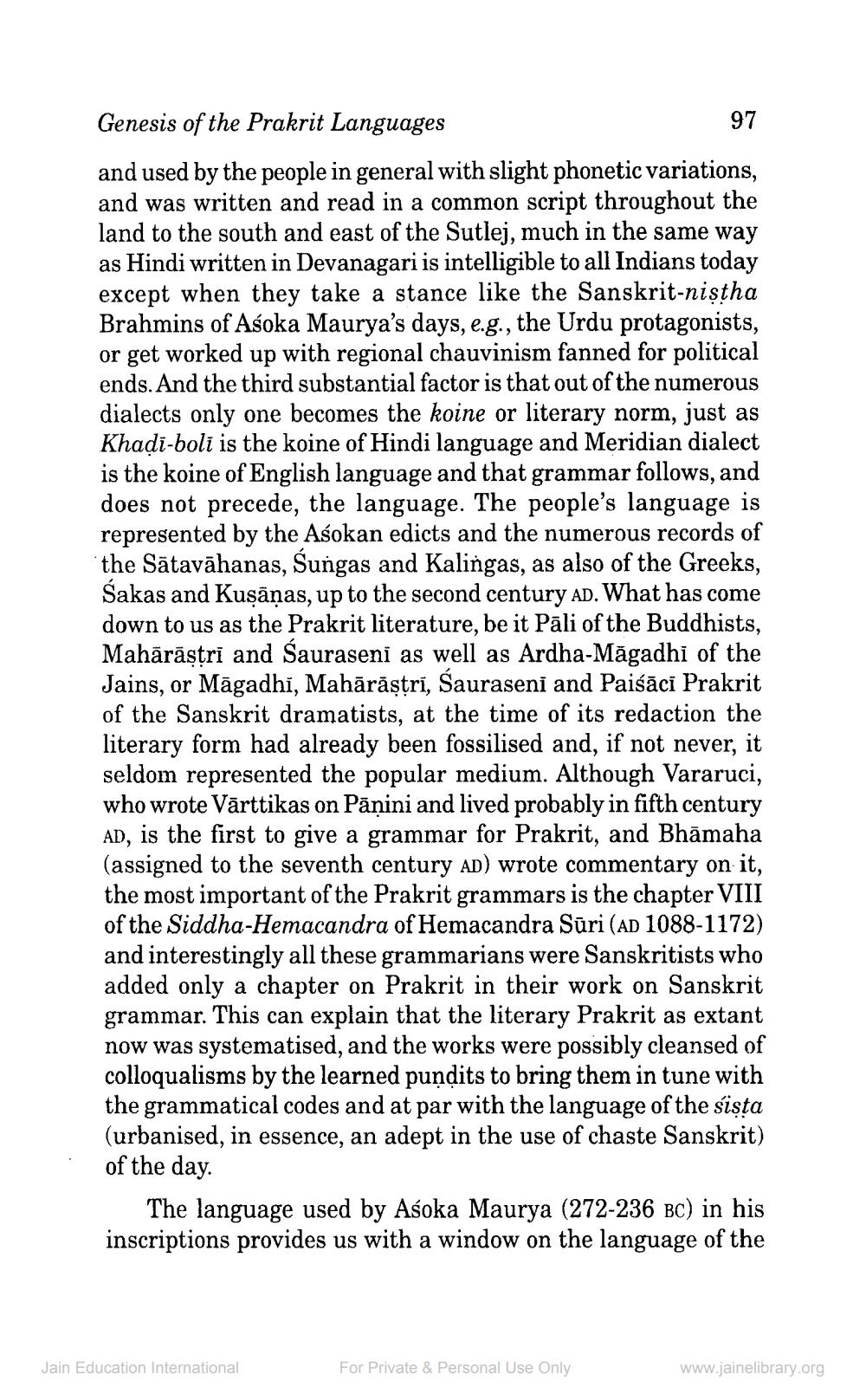________________
Genesis of the Prakrit Languages
97 and used by the people in general with slight phonetic variations, and was written and read in a common script throughout the land to the south and east of the Sutlej, much in the same way as Hindi written in Devanagari is intelligible to all Indians today except when they take a stance like the Sanskrit-nistha Brahmins of Asoka Maurya's days, e.g., the Urdu protagonists, or get worked up with regional chauvinism fanned for political ends. And the third substantial factor is that out of the numerous dialects only one becomes the koine or literary norm, just as Khadi-boli is the koine of Hindi language and Meridian dialect is the koine of English language and that grammar follows, and does not precede, the language. The people's language is represented by the Asokan edicts and the numerous records of the Sātavāhanas, Sungas and Kalingas, as also of the Greeks, Sakas and Kuşāņas, up to the second century AD. What has come down to us as the Prakrit literature, be it Pāli of the Buddhists, Mahārāstri and Sauraseni as well as Ardha-Măgadhi of the Jains, or Māgadhi, Mahārāştri, Sauraseni and Paisāci Prakrit of the Sanskrit dramatists, at the time of its redaction the literary form had already been fossilised and, if not never, it seldom represented the popular medium. Although Vararuci, who wrote Vārttikas on Pāṇini and lived probably in fifth century AD, is the first to give a grammar for Prakrit, and Bhāmaha (assigned to the seventh century AD) wrote commentary on it, the most important of the Prakrit grammars is the chapter VIII of the Siddha-Hemacandra of Hemacandra Sūri (AD 1088-1172) and interestingly all these grammarians were Sanskritists who added only a chapter on Prakrit in their work on Sanskrit grammar. This can explain that the literary Prakrit as extant now was systematised, and the works were possibly cleansed of colloqualisms by the learned pundits to bring them in tune with the grammatical codes and at par with the language of the sista (urbanised, in essence, an adept in the use of chaste Sanskrit) of the day.
The language used by Aśoka Maurya (272-236 BC) in his inscriptions provides us with a window on the language of the
Jain Education International
For Private & Personal Use Only
www.jainelibrary.org




